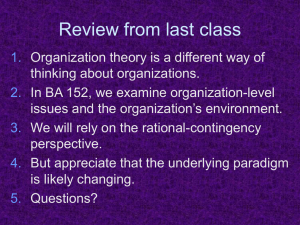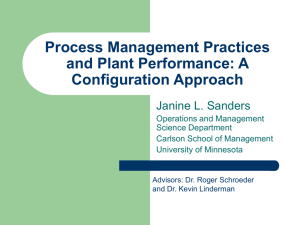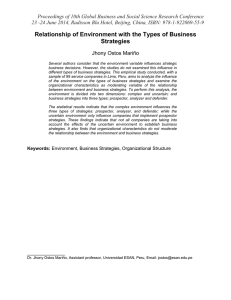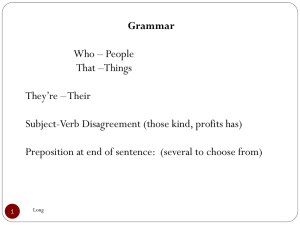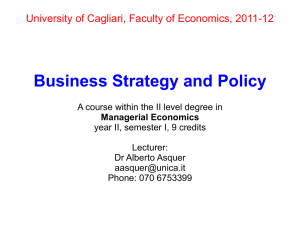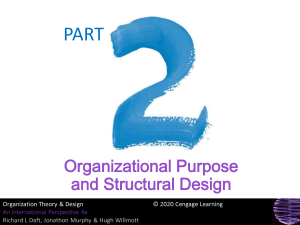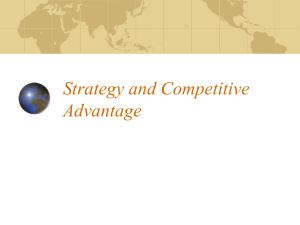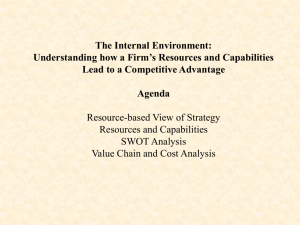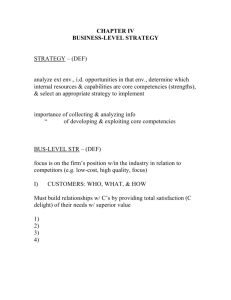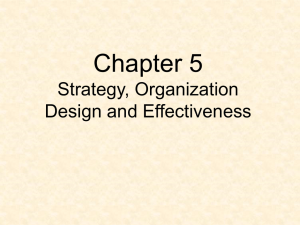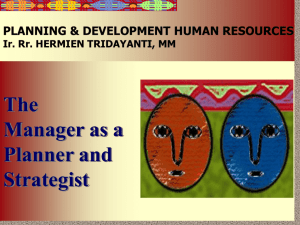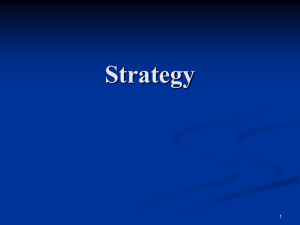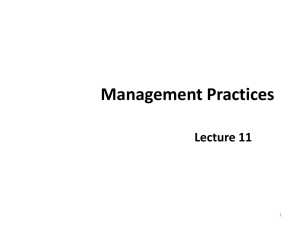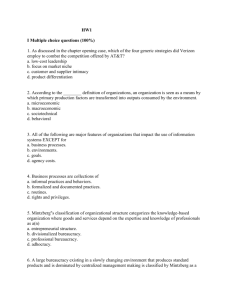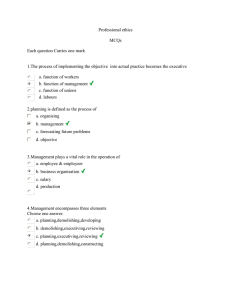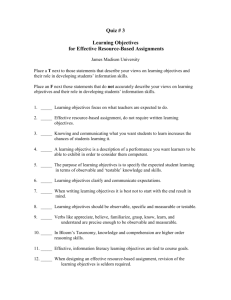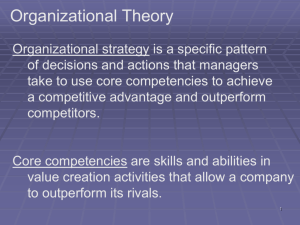Strategy, Organizational Design, and Effectiveness
advertisement
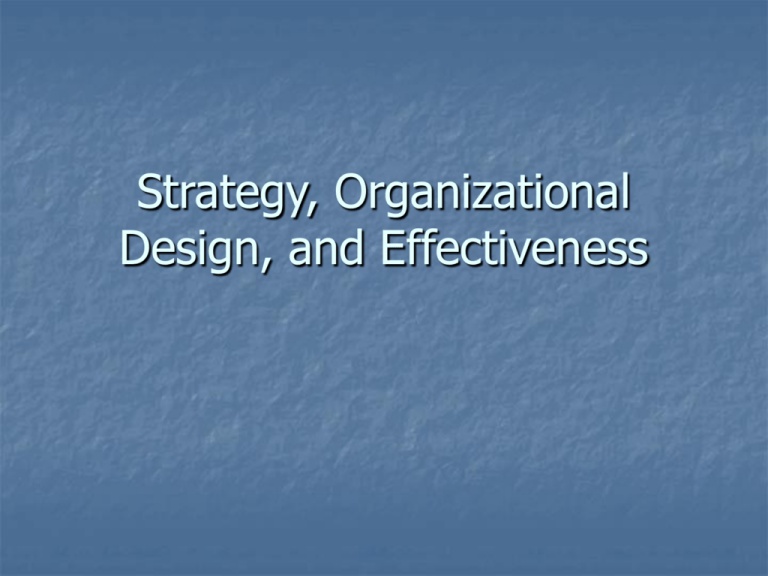
Strategy, Organizational Design, and Effectiveness Organizations Efficiency Organization Mechanistic Vertical hierarchy Routine tasks Managerial authority Learning Organization Organic Little hierarchy Empowered employees Participation and open information Managerial Roles Top Management Determine goals, startegy, and desiogn External and internal environment Middle Management Same role, but on a smaller scale The Process Consideration of Environment Establishment of strategic direction Formation of the organization’s design Setting the goals and strategies Implementing the goals and strategies Evaluation of firm’s efforts Have our goals and staregies been successful Organizational Purpose Mission Statements Why do we exist? Official goals Serves as a guide Examples: Organizational Purpose Operative Goals Short-term Actual goals Examples: OB Review- Why Do We Need Goals? Why are a company’s goals important for its employees? Customers? How does this affect the entire organization? Strategy & Design Strategy “A plan for interacting with the competitive environment to achieve organizational goals.” Goals v. Strategies Porter’s Competitive Strategy Competitive Advantage Low Cost Uniqueness Broad Competitive Scope Low-Cost Leadership Differentiation Narrow Competitive Scope Focused Low-Cost Leadership Focused Differentiation Miles & Snow’s Strategy Four Strategies Prospector Defender Hold onto existing customers Analyzer Growing environments Stable product, innovate around periphery Reactor Respond to conditions as they occur Ramifications on Organizational Design Low-Cost Leadership Focus on efficiency Strong, centralized authority Close supervision on routine tasks Differentiation Learning orientation Research capabilities Build customer relationships Rewards creativity and innovation Ramifications on Organizational Design Prospector Defender Efficiency orientation Close supervision Analyzer Learning orientation Research oriented Combines both efficiency and creativity Reactor No stable direction Other Factors Environment Technology How is it used within the company? Style/Life Cycle Is it fast paced? Size of company Culture Company’s current cultural climate Efficiency and Effectiveness Efficiency and Effectiveness Effectiveness Hard to measure Several different approaches Contingency Effectiveness Approaches Goal Approach Resource-based Approach Internal Process Approach Goal Approach Did company reach its desired output? Operative goals Advantage Disadvantage Resource-Based Approach Focuses on inputs Advantages Disadvantages Internal Process Approach Looks at transformation process Measures internal organizational health and efficiency Integrated Model Focus Structure Flexible Control Internal External HR Emphasis Open Systems Emphasis Internal Process Emphasis Rational Goal Emphasis Integrated Effectiveness Model Focuses on various areas of the company Two components Focus Structure
